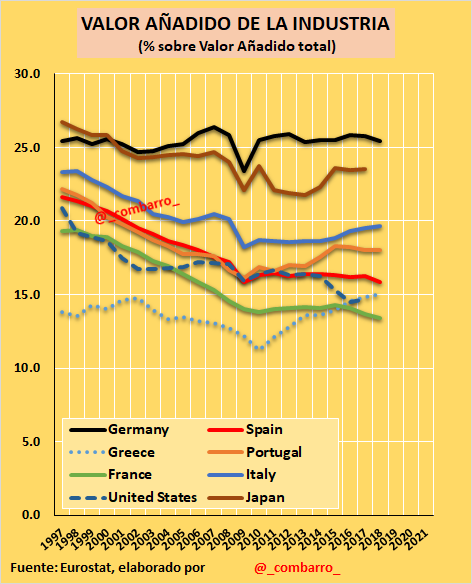"In 1987, as the Reagan administration was nearing its end, the economists Stephen S. Cohen and John Zysman issued a prophetic warning: “If high-tech is to sustain a scale of activity sufficient to matter to the prosperity of our economy…America must control the production of those high-tech products it invents and designs.” Production, they continued, is “where the lion’s share of the value added is realized.” Amid the offshoring frenzy that began in the late 1980s, this was heterodox thinking.
...
Manufacturing in China is cheaper, quicker and more flexible, they argue. With China’s networks of suppliers, engineers and production experts growing larger and more sophisticated, many believe that locating production there is a better bet in terms of quality and efficiency. Instead of manufacturing domestically, the thinking goes, U.S. firms should focus on higher-value work: “innovate here, manufacture there.”
.
Today many Americans are rightly questioning this perspective.
...
there is a growing recognition that we can no longer afford the outsourcing paradigm. Once manufacturing departs from a country’s shores, engineering and production know-how leave as well, and innovation ultimately follows. It’s become increasingly clear that “manufacture there” now also means “innovate there.”
...
Innovation in manufacturing gravitates to where the factories are. American manufacturers have learned that the applied research and engineering necessary to introduce new products, enhance existing designs and improve production processes are best done near the factories themselves. As more engineering and design work has shifted to China, many U.S. companies have a diminished capability to perform those tasks here.
...
In terms of long-term competitiveness, the biggest strategic consequence of this profound decline in American manufacturing might be the loss of our ability to innovate—that is, to translate inventions into production. We have lost much of our capacity to physically build what results from our world-leading investments in research and development. A study of 150 production-related hardware startups that emerged from research at MIT found that most of them scaled up production offshore to get access to production capabilities, suppliers and lead customers. As for foreign multinationals, many participate in federally funded university research centers and then use what they learn in their factories abroad."
Trecho retirado do WSJ de 16.11.2019, "Innovation Should Be Made in the U.S.A."


%2006.21.jpeg)













Sem comentários:
Enviar um comentário